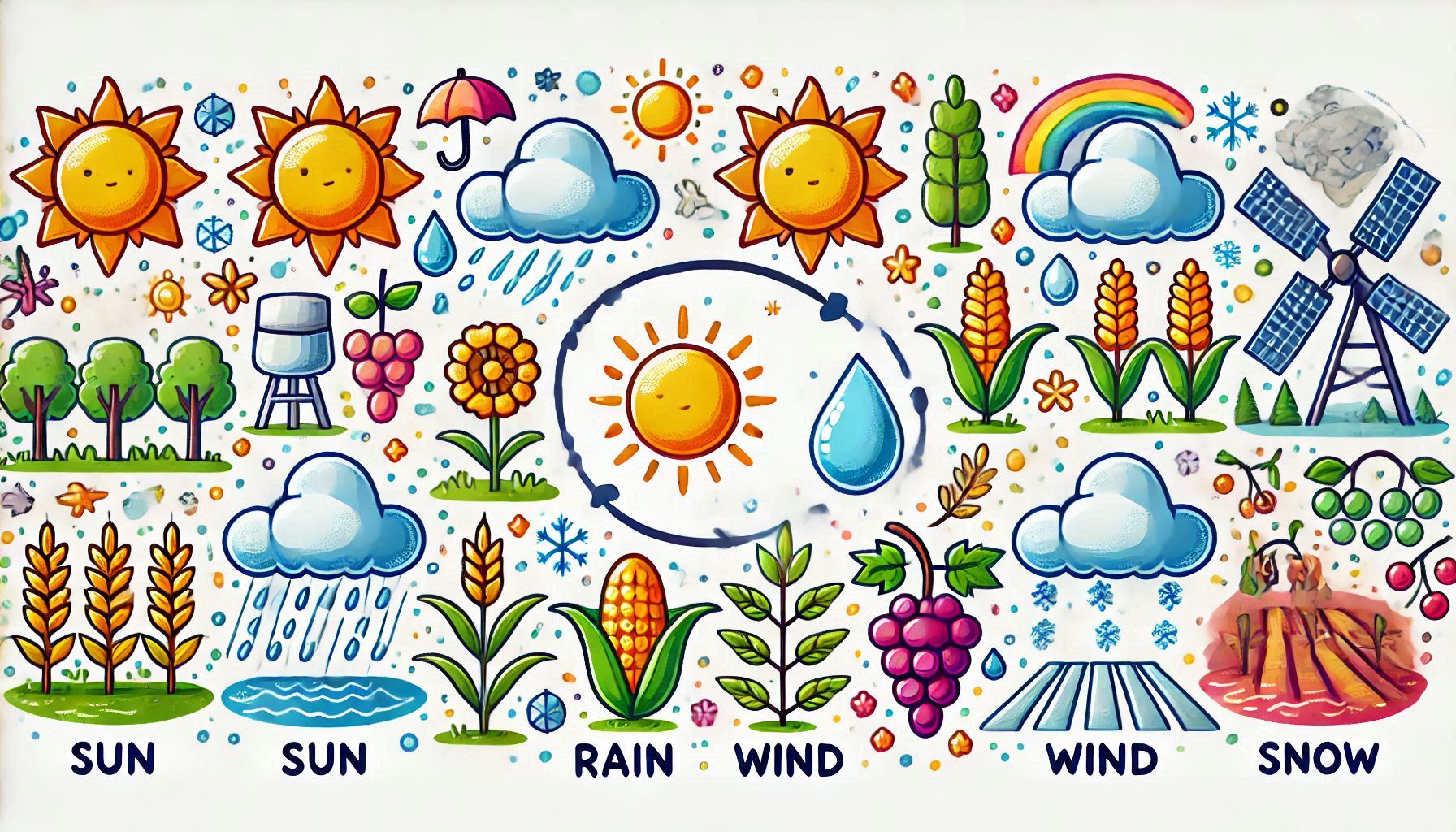Irrigation – Time and methods – Modern techniques of irrigation – Drainage and its importance One Liner
Irrigation and Its Importance
- Irrigation is the artificial application of water to soil to supplement rainfall.
- Plants contain 90% water, which is essential for their turgidity.
- Water helps in the regulation of temperature in plants.
- Water serves as a medium for dissolving soil nutrients.
- Water is essential in photosynthesis.
- Irrigation helps in maintaining soil moisture when rainfall is insufficient.
- Water is crucial for meeting plant transpiration needs.
- Plants absorb nutrients dissolved in water from the soil.
- Proper irrigation avoids excessive soil dryness, which affects plant growth.
- The field capacity of soil is the upper limit of optimum soil moisture for plant growth.
- The wilting point is the lower limit of soil moisture for plant survival.
- Optimum irrigation aims to maintain soil moisture between field capacity and wilting point.
- Irrigation frequency depends on the plant’s water requirements and soil moisture.
- Timely irrigation prevents wilting and ensures adequate crop growth.
Irrigation Methods
- Irrigation methods are categorized into surface, subsurface, and pressurized systems.
- Surface irrigation is the oldest and most common method, covering 90% of the world’s irrigated area.
- Surface irrigation is suitable for lands with low to moderate infiltration rates and gentle slopes.
- Border irrigation involves dividing the land into strips separated by low ridges to guide water flow.
- Border irrigation is suitable for moderately permeable soils.
- Check basin irrigation involves dividing fields into smaller basins surrounded by bunds to retain water.
- Check basin irrigation is effective in conserving rainwater and reducing soil erosion.
- Furrow irrigation applies water in narrow channels between crop rows.
- Furrow irrigation is used for row crops like maize, cotton, and potatoes.
- Furrow irrigation minimizes land wastage compared to check basin irrigation.
- Surge irrigation applies water intermittently in short ON/OFF cycles for improved water distribution.
- Subsurface irrigation applies water below the soil surface, promoting upward moisture movement via capillarity.
- Subsurface irrigation minimizes evaporation and deep percolation losses.
- Subsurface irrigation does not interfere with farm machinery operations.
- Subsurface irrigation requires special natural conditions and may cause waterlogging if mismanaged.
Modern Irrigation Techniques
- Drip irrigation delivers water directly to the plant roots, reducing water loss.
- Drip irrigation is ideal for water-scarce and salt-affected soils.
- Drip irrigation improves water use efficiency to approximately 95%.
- Drip irrigation allows for flexible emitter placements, varying discharge rates, and minimal weed growth.
- Drip irrigation is energy-efficient and can be used day and night.
- Sprinkler irrigation mimics rainfall by distributing water overhead.
- Sprinkler systems use pipes under pressure with nozzles to distribute water uniformly.
- Sprinkler irrigation reduces erosion and saves water by avoiding runoff.
- Sprinkler irrigation is suitable for undulating terrains and coarse-textured soils.
- Sprinkler systems can also apply fertilizers and chemicals via fertigation.
- Sprinkler irrigation is less efficient in high winds due to evaporation losses.
- Sprinkler irrigation is not suitable for tall crops like sugarcane.
- The rotating head sprinkler system is a type of portable sprinkler system.
- Sprinkler irrigation is effective for frost protection in sensitive crops.
- Modern irrigation systems can be automated for more precise water application.
Drainage and Its Importance
- Drainage involves the artificial removal of excess water from the soil.
- Effective drainage systems improve soil aeration, which is vital for root health.
- Aeration enhances nutrient availability by facilitating the diffusion of oxygen to the root zone.
- Drainage helps in removing toxic gases like carbon dioxide from the root zone.
- Proper drainage prevents toxicity from excess iron and manganese in acidic soils.
- Drainage improves soil structure, enabling deeper root growth.
- Effective drainage systems allow for timely field operations by preventing waterlogging.
- Drainage helps in controlling soil salinity by removing excess salts from the root zone.
- Drainage is essential for crops growing in areas with high water tables.
- Efficient drainage allows for better nutrient uptake by crops.
- Drainage reduces the risk of root diseases caused by stagnant water.
- In poorly drained soils, roots cannot access oxygen, impairing crop growth.
- Drainage ensures that water does not accumulate in the root zone and harm plant health.
- Proper drainage can prevent the spread of waterborne pathogens.
- Subsurface drainage involves laying pipes below the soil surface to remove excess water.
- Surface drainage helps manage excess water at the field surface level.
Drip Irrigation System Components
- Drip irrigation systems include a pump, mainline, sub-mains, laterals, and emitters.
- PVC pipes are typically used for the mainline and sub-mains in drip irrigation systems.
- LLDPE tubes are commonly used for the lateral lines in drip irrigation.
- Emitters attached to laterals are responsible for distributing water to plants.
- Drip systems include pressure regulators to maintain consistent water pressure.
- Filters are necessary in drip systems to prevent clogging.
- Fertilizer application devices can be integrated into drip systems for fertigation.
- Water meters help monitor water usage in drip irrigation.
- Drip systems require regular maintenance to prevent emitter clogging.
Sprinkler Irrigation System Components
- Sprinkler irrigation systems use overhead pipes to distribute water.
- Rotating head sprinklers are the most common type in sprinkler irrigation systems.
- Sprinkler systems are classified into portable, semi-permanent, and permanent types.
- Semi-permanent systems are fixed in place but can be moved for maintenance.
- Solid set systems have a fixed arrangement of sprinklers with minimal mobility.
- Permanent systems are installed in fields with a long-term irrigation need.
- Sprinkler systems use pressure to create a uniform spray of water across the field.
- The efficiency of sprinkler irrigation is reduced by strong winds, which increase evaporation.
- Sprinkler systems are ideal for areas with undulating topography and uneven land.
Water Conservation and Efficiency
- Drip irrigation is the most water-efficient irrigation method, with an efficiency rate of up to 95%.
- Drip systems reduce evaporation losses, ensuring water is used efficiently.
- Sprinkler systems conserve water compared to surface irrigation, saving up to 40%.
- Irrigation systems can reduce weed growth by applying water directly to the root zone.
- Drip irrigation reduces water wastage by applying water only where it’s needed.
- Sprinkler irrigation systems allow precise control over water distribution.
- Water conservation is vital in regions with limited freshwater resources.
- Efficient irrigation reduces the need for supplemental irrigation during dry periods.
- Modern irrigation techniques improve crop yields by providing consistent moisture levels.
- Automated irrigation systems reduce labor costs and improve water management.
Challenges and Limitations of Modern Irrigation
- High initial investment costs for drip and sprinkler systems can be a barrier for some farmers.
- Drip irrigation requires extensive knowledge for optimal operation and maintenance.
- Sprinkler systems are less effective in windy conditions due to higher evaporation losses.
- Drip systems can be damaged by mechanical forces or clogging.
- Drip irrigation requires high-quality water to prevent clogging and system failure.
- Some areas lack the natural conditions suitable for subsurface irrigation systems.
- Excessive irrigation can lead to waterlogging and crop damage.
- Poor drainage systems can increase the risk of soil erosion.
- Inadequate drainage can lead to crop root suffocation and reduced growth.
- Over-irrigation can lead to nutrient leaching and soil salinization.
- Maintaining efficient drainage systems requires ongoing monitoring and care.
- Irrigation and drainage systems must be tailored to local environmental conditions for maximum effectiveness.










